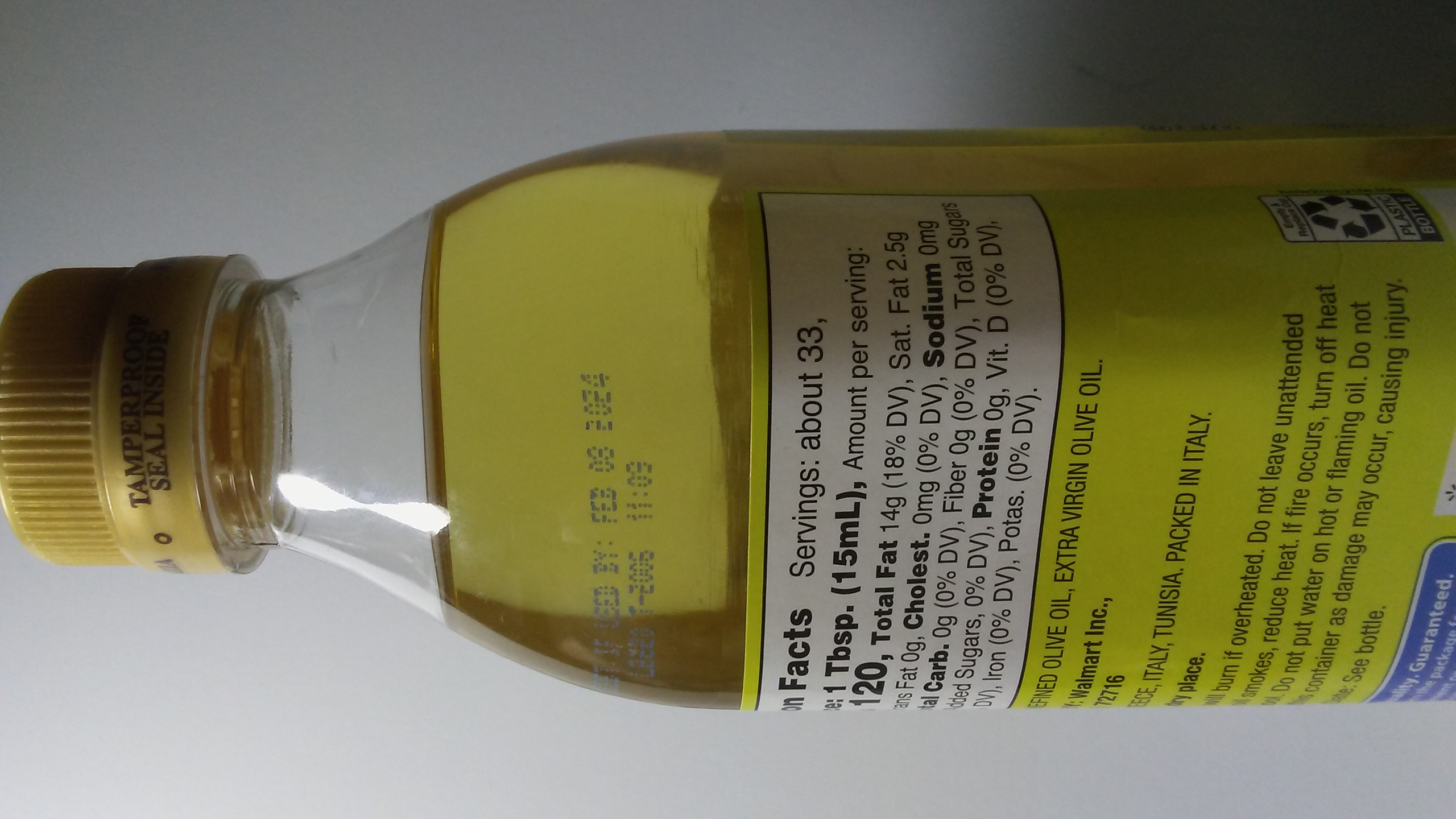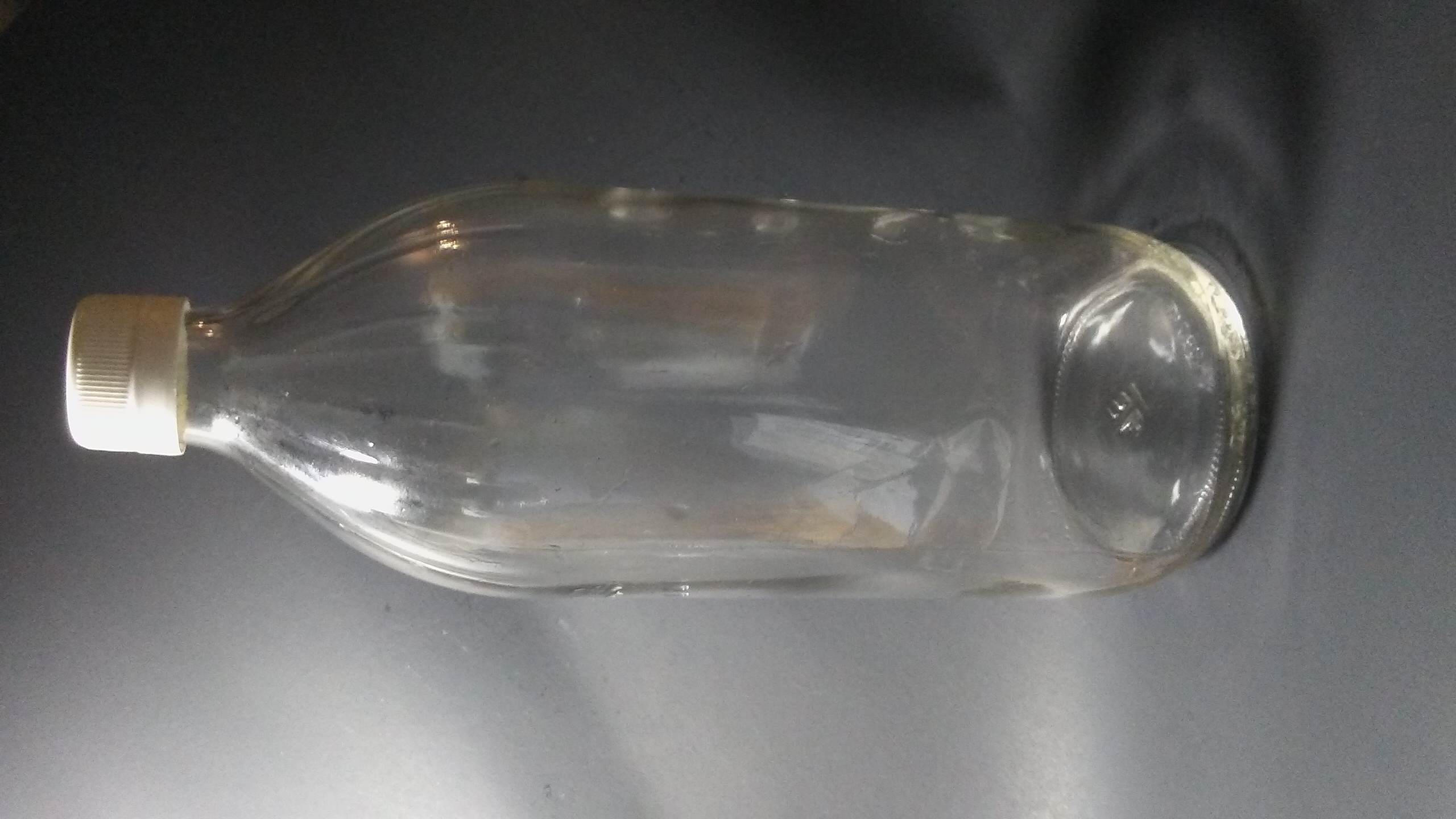Is your olive oil genuine or not?
There are several ways that you can test your olive oil and know if it's 100% pure. The issue of purity is important if you are cooking with olive oil, but it's also important in the soap making realm for a different reason. You will want to know for sure, Is your olive oil genuine? Or just a blend of 51% olive oil and 49% canola oil?
Testing your olive oil.
Take your olive oil (that is of a questionable nature) and pour several ounces of it into a glass jar with a lid. Place the glass jar into the refrigerator for a 24 hour period. After 24 hours check the jar of questionable olive oil. Has it coagulated and thickened up? Or has it remained a liquid?
Is your olive oil genuine? Well, if the olive oil remains a liquid, then it's polyunsaturated and NOT PURE olive oil. If the olive oil has coagulated and/or thickened up then it is monounsaturated and is PURE olive oil.
What if your olive oil is not 100% pure?

If the fridge test determined that we are not using 100% olive oil, we may estimate that the percentage of olive oil may be as low as 51%! We may also estimate that the substituted oil could likely be canola oil but we cannot rule out other oils either.
For cooking and eating purposes it is obvious that you want to use the best and most pure olive oil. If your olive oil remained a liquid in the fridge test, you could be ingesting a genetically modified (GMO) canola oil or other similar oil into your diet.
Oils with different SAP numbers change your lye calculations. Your soap could be affected.
For soap making purposes we need to know if we are using 100% genuine olive oil for one important reason. That reason is the saponification numbers.
The saponification number (SAP) is part of the formula to determine how much caustic lye will be needed to saponify the particular oil used in the soap recipe.
Each oil has a separate saponification number. So if we are not using 100% olive oil, then we can imagine another oil such as Canola would be used up to 49% giving us two saponification numbers to calculate an accurate lye amount.
Saponification numbers for:
1. Olive Oil - 0.135
2. Canola Oil - 0.123
So for example lets say that the total amount of olive oil for this recipe is 100 ounces. The questionable olive oil could have as little as 51% actual olive oil and 49% canola oil.
The total oil amount will have to be split up as follows:
Olive Oil - 51.0 oz. x 0.135 = 6.88 oz.
Canola Oil - 49.0 oz. x 0.123 = +6.027 oz.
Totals - - - - - 100 oz. - - - - - - - - = 12.90 oz. of lye will be needed for these two oils.
Whereas if we if fact had used 100% olive oil the totals would be as follows:
Olive Oil - - - -100 oz. x 0.135 = 13.5 oz. of lye will be needed.
The difference here is little more than a half ounce of caustic lye. This may not affect the outcome of your soap making recipe however it is important to know that it could. It will be easier to avoid this confusion by purchasing reputable olive oil by following some simple steps.
How to avoid purchasing diluted or fake olive oil.

Here are two things to watch out for:
1. Avoid olive oil in clear bottles. Whether in a clear plastic or glass bottle it will most likely be rancid because olive oil will spoil when exposed to light.
2. Avoid extremely cheap olive oil prices and labels that may say "light" or "pure".
Look for third party certification seals on the bottles or tins of olive oil.
Is your olive oil genuine? Here is a short list of certification seals to look for on the labels.
1. In the European Union (PDO) Protected Designation of Origin.
2. In Italy (DOP) Protected Designation of Origin.
3, In California (COOP) California Olive Oil Council. Certified extra virgin seal for CA made oils.
4. In Australia (EVOO) Extra Virgin Olive Oil. A strict set of rules for certification. It's the purist.
For quality olive oil, look at the FFA levels, Harvest Date and Pressed On Date.
Look for the (FFA) Free Fatty Acids level on the label. Only the highest quality producers will have an FFA level of 0.2 or lower. Also, look for the pressed on date or the harvest date. Reputable olive oil companies will provide this information on their bottles or tins.
Finally, If it's possible to taste or smell the olive oil for yourself please do so! The best olive oil will smell and taste earthy, fresh, bright and green.